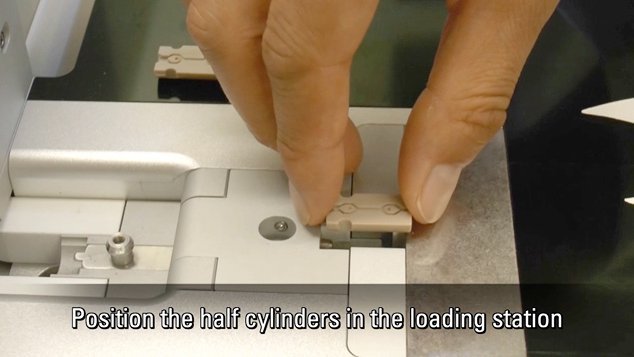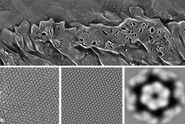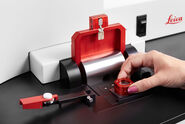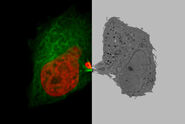Flat specimen system for Leica EM HPM100
This system is the most frequently used and it exists in two variations: flat specimen system for 3 mm carriers and for 6 mm carriers. It is suitable for an array of applications utilizing the freezing of different cultured cell types, bacteria, algae, animal and plant tissues, etc. Samples frozen in the flat specimen carriers are usually further processed in a freeze substitution unit and resin embedded.
A well frozen sample requires carefully chosen cryo-protectant/fillers and specific handling prior to the freezing to ensure the optimal physiological state of the sample, as well as correct handling which will vary from sample to sample. We are not going to elaborate on these details, but we have to underline their importance and strongly recommend further readings on the subject.
Simple rules when filling the carriers:
- Avoid overfilling or under-filling the carriers as either will result in poor freezing results.
- Avoid mechanical damage of the sample while filling the carrier as this will result in suboptimal quality
- Always try to find the optimum correlation between sample size and carrier size.
- Timing is essential. Manipulation of the sample should be reduced to the possible minimum.
Tube system for Leica EM HPM100
The tube system is suitable for samples in suspension, but primarily it is employed for CEMOVIS applications (Cryo Electron Microscopy Of Vitreous Sections). This method allows studies of samples that are fully hydrated and with minimal, close to none molecular aggregations. Therefore, when it comes to resolving molecular structure in their native state it is the method of choice. For this specific application the sample is mixed with dextran to a final concentration of 20 % just before freezing it.
Once frozen the sample can be trimmed (copper is easily trimmed by a diamond knife without inducing any damage)and sectioned in the cryo-ultramicrotome. For details see "Brief Introduction to High-Pressure Freezing".
Simple rules when filling the tubes:
- Avoid air bubbles being trapped as this will compromise the freezing results
- Avoid keeping the sample-dextran mixture too long before freezing as this will result in drying artifacts and will influence the physiological state of the sample.
Sapphire system 6 mm for Leica EM HPM100
Sapphire discs are suitable for studies of adherent monolayers or for CLEM (Correlative Light and Electron Microscopy) applications. Sapphire has excellent thermal properties and is very convenient for light microscopy observations or light stimulation applications.
Simple rules when filling the tubes:
- Avoid air bubbles being trapped when assembling the two sapphires as this will compromise the freezing results and might result in shattering of the sapphires.
- Avoid keeping the prepared sapphire-sample-sapphire assembly too long before freezing as this will influence the physiological state of the sample.
- Make sure the sapphire that carriers the cells is marked in an appropriate way (e.g. carbon coated with a pattern) so it can be distinguished easily after freezing and during further processing
Acknowledgement
We thank Dr. Shigeki Watanabe, University of Utah, USA, for his contribution to the videos.




